
Caterpillar Inc. announces second quarter 2019 sales and revenues of $14.4 billion, a 3% increase compared with $14.0 billion in the second quarter of 2018. Second-quarter 2019 profit per share was $2.83, compared with $2.82 profit per share in the second quarter of 2018.
During the second quarter of 2019, Machinery, Energy & Transportation (ME&T) operating cash flow was $2.0 billion. The company repurchased $1.4 billion of Caterpillar common stock and paid dividends of $0.5 billion in the second quarter of 2019. The enterprise cash balance at the end of the second quarter of 2019 was $7.4 billion.
"Sales and revenues increased this quarter, including a record performance from Construction Industries, which reflected our strong competitive position globally," says Caterpillar Chairman and CEO Jim Umpleby. "Our strong operating cash flow in the quarter allowed us to repurchase shares and pay dividends of about $1.9 billion. This is in line with our intention to return substantially all free cash flow to shareholders."
2019 Outlook
The full-year profit per share outlook range is maintained at $12.06 to $13.06, which includes the first-quarter $0.31 per share discrete tax benefit. The company currently expects to be at the lower end of this outlook range.
The company continues to expect modest sales growth in 2019, which assumes a recovery in Oil and Gas near the end of the year and dealers working through higher machine inventory levels. The company still expects price realization to offset manufacturing costs. With a higher amount of restructuring costs incurred in the second quarter of 2019, the company expects restructuring costs for the remainder of the year to be significantly lower.
"We expect our profit per share in 2019 to be another record," adds Umpleby. "We have the right strategy in place to deliver long-term profitable growth through our continued focus on strategic investments, including growing services and expanding offerings. We will also continue to focus on driving operational excellence including a flexible and competitive cost structure."
The outlook does not include a mark-to-market gain or loss for re-measurement of pension and other post-employment benefit plans, which will be excluded from adjusted profit per share in the fourth quarter of 2019 along with any other discrete items.
CONSOLIDATED RESULTS
Consolidated Sales and Revenues
Total sales and revenues were $14.432 billion in the second quarter of 2019, an increase of $421 million, or 3%, compared with $14.011 billion in the second quarter of 2018. The improvement was primarily due to favorable price realization and higher sales volume driven by improved demand for equipment, including a favorable impact from changes in dealer inventories. The increase was partially offset by unfavorable currency impacts. Sales increased in Construction Industries and Resource Industries, while Energy & Transportation sales decreased. Sales increased in North America and Latin America, partially offset by decreases in Asia/Pacific and EAME.
Consolidated Operating Profit
Consolidated Operating Profit Comparison
Operating profit for the second quarter of 2019 was $2.213 billion, up 2% compared with $2.167 billion in the second quarter of 2018. The increase of $46 million was due to favorable price realization and lower selling, general and administrative (SG&A) and research and development (R&D) expenses, offset by higher manufacturing costs and unfavorable sales volume due to product mix.
The increase in manufacturing costs was primarily due to higher material costs, including tariffs, variable labor and burden and warranty expense. Favorable SG&A/R&D expenses were mostly due to lower short-term incentive compensation expense.
The change in sales volume was the result of an unfavorable mix of products primarily within Energy & Transportation and Construction Industries.
Operating profit margin was 15.3% for the second quarter of 2019, compared with 15.5% for the second quarter of 2018.
Other Profit/Loss and Tax Items
The provision for income taxes for the second quarter of 2019 reflected an estimated annual tax rate of 26%, compared with 24% for the second quarter of 2018. The increase was largely driven by the application of U.S. tax reform provisions to the earnings of certain non-U.S. subsidiaries, which do not have a calendar fiscal year-end. These provisions did not apply to these subsidiaries in 2018.
Construction Industries' total sales were a record $6.467 billion in the second quarter of 2019, a 5% increase compared with $6.172 billion in the second quarter of 2018. Sales increased primarily due to the favorable impact of dealers increasing inventories in the second quarter of 2019, compared with decreasing inventories in the second quarter of 2018. Favorable price realization was partially offset by unfavorable currency impacts.
- In North America, sales increased primarily due to higher demand, including the favorable impact of dealer inventories, and favorable price realization.
- Construction activities remained at low levels in Latin America, leading to flat sales.
- In EAME, the sales decrease was primarily due to currency impact related to the euro.
- Sales in Asia/Pacific declined due to lower demand mainly due to China driven by continued competitive pricing pressures and timing of the selling season as well as unfavorable currency impacts.
Construction Industries' profit was a record $1.247 billion in the second quarter of 2019, an 8% increase compared with $1.154 billion in the second quarter of 2018. The increase in profit was due to favorable price realization, which was mostly offset by higher manufacturing costs. The increase in sales volume was more than offset by an unfavorable mix of products. Higher material costs and variable labor and burden, including the absence of Brazil incentives, were the primary drivers of increased manufacturing costs.
Resource Industries' total sales were $2.800 billion in the second quarter of 2019, an 11% increase compared with $2.526 billion in the second quarter of 2018. The increase was primarily due to higher equipment demand and favorable price realization. Mining customers increased capital spending to support ongoing mine site operations, which drove higher sales. In addition, sales increased for non-residential construction and quarry and aggregate customers.
Resource Industries' profit was $481 million in the second quarter of 2019, a 17% increase compared with $411 million in the second quarter of 2018. The improvement was mostly due to favorable price realization and increased sales volume, partially offset by higher manufacturing costs. Manufacturing costs increased due to unfavorable operating leverage from changes in inventory, as well as higher material costs, variable labor and burden and warranty expense.
Energy & Transportation's total sales were $5.486 billion in the second quarter of 2019, a 4% decrease compared with $5.724 billion in the second quarter of 2018. Sales decreased primarily due to lower sales volume and unfavorable currency impacts. The decrease was partially offset by favorable price realization.
- Oil and Gas – Sales decreased in North America primarily due to the timing of turbine project deliveries that occurred in the second quarter of 2018 and from lower demand for new equipment in the Permian Basin. This was partially offset by increased sales in EAME primarily due to higher turbine sales for production applications.
- Power Generation – Sales slightly increased mostly due to higher deliveries in North America for both large diesel reciprocating engines and turbines. Increases in North America were partially offset by lower sales in EAME for gas power generation applications.
- Industrial – Sales were slightly down, with a decrease in EAME primarily due to unfavorable currency impacts partially offset by higher volume in Asia Pacific and Latin America.
- Transportation – Sales were slightly lower primarily due to the timing of locomotive deliveries in the second quarter of 2018 and reduced marine activity in North America, partially offset by higher sales for rail services.
Energy & Transportation's profit was $886 million in the second quarter of 2019, compared with $1.012 billion in the second quarter of 2018. The decrease of 12% was mostly due to an unfavorable mix of applications and lower volume. Price realization was slightly favorable, offset by slightly higher manufacturing costs.
Financial Products' segment revenues were $873 million in the second quarter of 2019, an increase of $44 million, or 5%, from the second quarter of 2018. The increase was primarily due to higher average financing rates in North America and Asia/Pacific and higher average earning assets in North America.
Financial Products' segment profit was $193 million in the second quarter of 2019, up 44% compared with $134 million in the second quarter of 2018. The increase was primarily due to a decrease in the provision for credit losses at Cat Financial and an increase in net yield on average earning assets.
At the end of the second quarter of 2019, past dues at Cat Financial were 3.38%, compared with 3.16% at the end of the second quarter of 2018. The increase in past dues was primarily driven by EAME. Write-offs, net of recoveries, were $74 million for the second quarter of 2019, compared with $80 million for the second quarter of 2018. As of June 30, 2019, Cat Financial's allowance for credit losses totaled $523 million, or 1.81% of finance receivables, compared with $534 million, or 1.89% of finance receivables at March 31, 2019. The allowance for credit losses at year-end 2018 was $511 million, or 1.80% of finance receivables.
Dealer Inventories and Order Backlog
Dealer machine and engine inventories increased about $500 million during the second quarter of 2019, compared with an increase of about $100 million during the second quarter of 2018.
At the end of the second quarter of 2019, the order backlog was $15.0 billion, about $1.9 billion lower than the first quarter of 2019.


![Hcm Ax Landcros Press Release[32] jpg](https://img.oemoffhighway.com/mindful/acbm/workspaces/default/uploads/2025/11/hcmaxlandcros-press-release32jpg.mAEgsolr89.jpg?auto=format%2Ccompress&fit=crop&h=100&q=70&w=100)
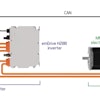
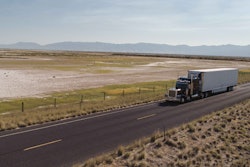
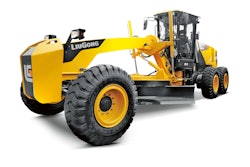
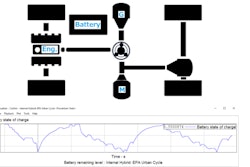
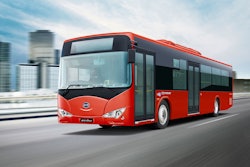
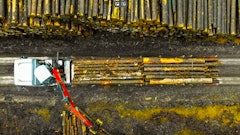

![Hcm Ax Landcros Press Release[32] jpg](https://img.oemoffhighway.com/mindful/acbm/workspaces/default/uploads/2025/11/hcmaxlandcros-press-release32jpg.mAEgsolr89.jpg?ar=16%3A9&auto=format%2Ccompress&fit=crop&h=135&q=70&w=240)








